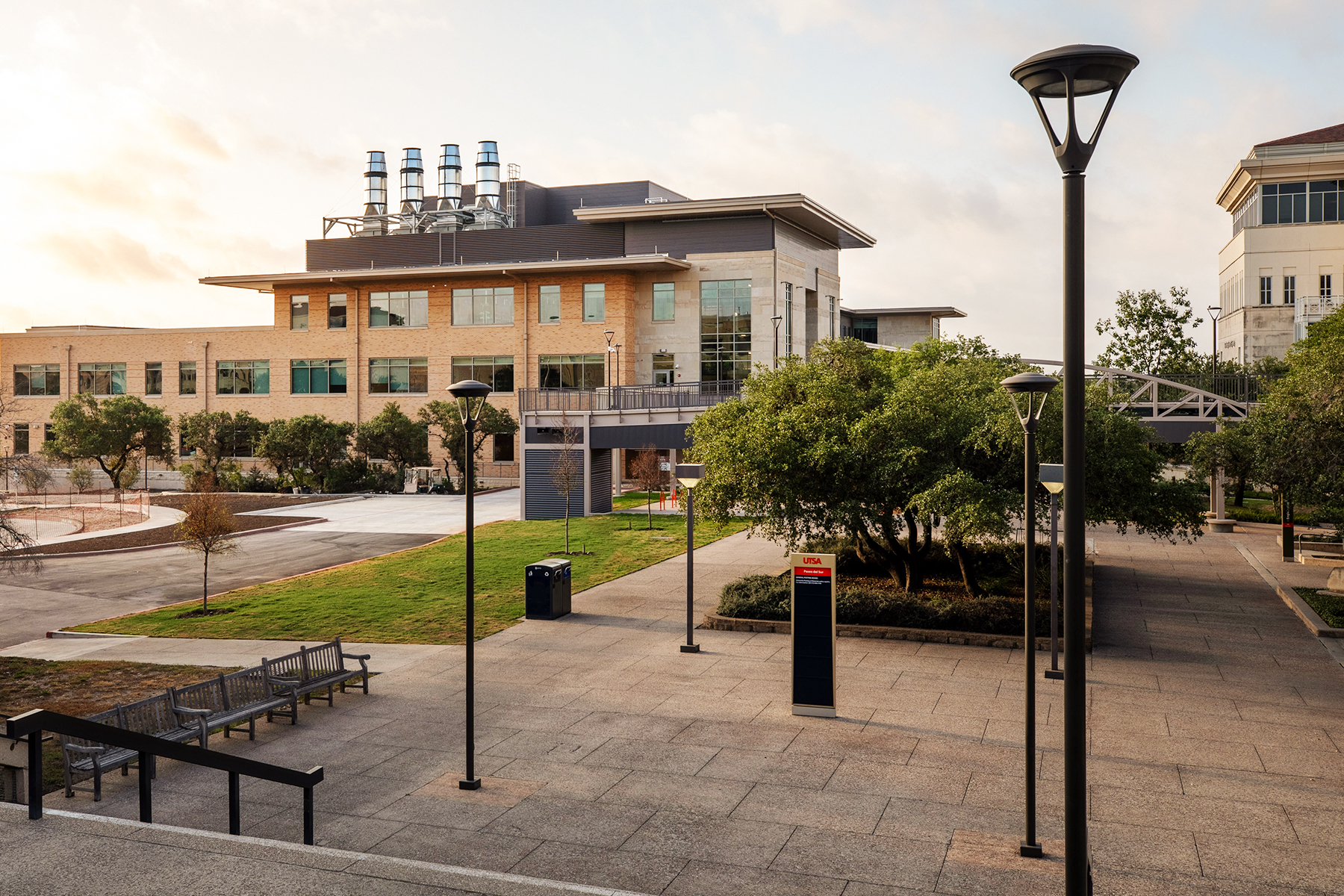The UTSA Science and Engineering Building showcases the University’s strong commitment to leading-edge STEM education and research. Designed in partnership with Treanor, the facility is a key asset in attracting top STEM students, educators, and research projects.
The Science & Engineering building significantly expands the University’s available classrooms, faculty offices, and instructional laboratories for Biology, Chemistry, and Engineering. Notably, it also hosts the School of Engineering’s Maker Space: students get hands-on access to the latest prototyping technology and testing tools. The collaborative workspace encourages students from different majors to develop projects together in teams.
The Science and Engineering Building (SEB) holds a strategic position at the southern end of the campus, accessible through the “Paseo del Sur.” Aligning with our core belief in honoring architectural context, the SEB effortlessly integrates with neighboring structures, yet is a forward-looking presence on the campus. The exterior architecture honors precedent, while integrating new USTA campus design language.
The Treanor and Alamo teams responded directly to the programming needs of academic departments. For instance, new chemistry instructional labs were centered around the integration of fume hoods, specialized equipment that can be shared to maximize capital investment. To enhance accessibility and accommodate special projects, support and preparation spaces are strategically positioned adjacent to the labs. The labs are interconnected by an internal corridor, providing efficient access for students and instructors. Efficiency also drove our design for Biology and Engineering areas, maximizing flexibility for classrooms and technically advanced laboratory facilities such as the fluids and thermofluids lab, measurements and instrumentation lab, and materials characterization lab.
The architecture makes inspired use of light and space: the building is organized around a “spine,” a sunlit three-story interior volume. Informal seating groups on the landings create a “study anywhere” ease, encouraging collaboration. The tall, airy makerspace lab is transparent both to the building exterior and interior. Situated near the main entry, it is an inspiring introduction to a building designed to spark collaboration and innovation in STEM learning for a new generation of Roadrunners.
University of Texas at San Antonio
San Antonio, Texas
148,250 SF
Completed 2020



Associate Architect | Treanor
Structural | IES
MEP | Shah Smith
Civil | Pape Dawson
Landscape | Coleman & Associates
IT/Tech | COMBS Consulting Group
Cost | Vermeulens
Code/Life Safety | Jensen Hughes
1512 South Flores St.
San Antonio, TX 78204
210.227.2612